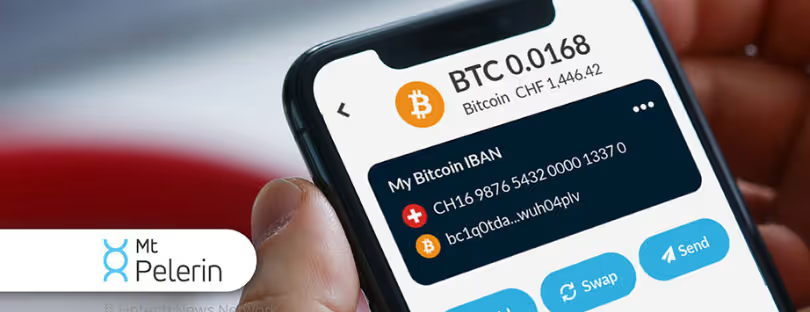
Double-Digit Growth in Denmark, Netherlands Smartphone Markets
According to Strategy Analytics prelimimary estimates for Q2 2021, both the Denmark and Netherlands smartphone market grew in a double digits annually. Strategy Analytics Smartphone Country Share Tracker (SCST) Service have been tracking both these markets of Western European region. smartphone market denmark netherlands
Samsung and Apple took the top two positions in both Denmark and Netherlands.
Of the two, Danish Smartphone market has a higher growth momentum and has nearly 8 in 10 devices being shipped by the top three vendors with Xiaomi in the third position. Xiaomi, has managed steady growth here, despite Danish consumers appetite for premium devices. smartphone market denmark netherlands
Netherland’s smartphone market has OPPO in the third rank. While consolidation seems less intense here, with the top three accounting for just over 6 in 10 devices shipped. However, the Chinese vendor build up in Netherlands is much stronger with them together accounting for over half the smartphone volumes. The likes of OPPO and OnePlus having found strong growth momentum here ( both vendors clocking triple digit annual growth rates in Q2 2021.) smartphone market denmark netherlands

The telecommunications market in the Netherlands has one of the strongest broadband sectors in the world, a top performer in terms of connectivity. It is also a very competitive one, especially in the mobile sector, with KPN and Vodafone-Ziggo being the two dominators in this industry. The sector is closely regulated, making it hard for new businesses to enter the market, however, it remains a constantly evolving industry. smartphone market denmark netherlands
Denmark telecommunication market
Denmark has one of the highest broadband penetration rates globally, with a near universal availability of superfast connections. Extensive cable and DSL infrastructure has been supported by a progressive regulatory regime which has encouraged operator access to both copper and fibre networks. Fibre networks have a fast-growing footprint, while a number of community and metropolitan schemes have supplemented TDC’s own commitments to build out fibre nationally. A number of wholesale fibre schemes have also added to the wider availability of fibre broadband.
The reach of LTE infrastructure is comprehensive, while the MNOs by mid-2021 have also provided about 90% population coverage with 5G. Services based on 5G were initially launched using trial 3.5GHz licences. The multi-spectrum auction held in April 2021 has enabled them to improve the resilience and capacity of 5G. At the same time, all MNOs are engaged in closing down their 3G networks and refarming spectrum for LTE and 5G use.
On the consumer side, spending on telecoms services and devices is under pressure from the financial effect of large-scale job losses and the consequent restriction on disposable incomes. However, the crucial nature of telecom services, both for general communication as well as a tool for home-working, will offset such pressures. In many markets the net effect should be a steady though reduced increased in subscriber growth.
Although it is challenging to predict and interpret the long-term impacts of the crisis as it develops, these have been acknowledged in the industry forecasts contained in this report.
In the first half of 2020, the mobile provider TDC had largest market share of mobile operators in Denmark based on number of subscriptions, which amounted to 38 percent. Telenor ranked second with close to 20 percent of the market.
Netherlands telecommunication market
The telecommunications market in the Netherlands has one of the strongest broadband sectors in the world, a top performer in terms of connectivity. It is also a very competitive one, especially in the mobile sector, with KPN and Vodafone-Ziggo being the two dominators in this industry. The sector is closely regulated, making it hard for new businesses to enter the market, however, it remains a constantly evolving industry.
The share of individuals with access to the internet grew from 80 percent in 2012 to approximately 96.3 percent in 2019. To put it in perspective, only Luxembourg and Norway had a higher percentage of broadband internet usage than the Netherlands. Furthermore, the share of individuals using internet through their smartphone saw a steady increase.
The smartphone penetration rate grew from approximately 70 percent in 2014 to 93 percent in 2019. Narrowing the penetration rate of phones down to age, it is not surprising that young people had the highest usage rate. Nearly 99 percent of 13- to 19-year-old individuals indicated to use a smartphone, whereas the 50-64 age group was less with approximately 80 percent. The functionality of the smartphone has one clear use among consumers: going online. 86 percent of the online population used their phone for surfing on the internet. Social media, on the other hand, was used by 68 percent, whereas banking was done by a little over 50 percent of respondents.
With the rise of mobile phones and the wireless service provisions, quad play packages (also known as ”The Fantastic Four”) became more popular year by year. Quad play packages combine triple play service of broadband internet access, television and telephone with wireless service provisions. As of the fourth quarter of 2019, 25 percent of the retail connections of bundles services were quad play, compared to 13 percent in 2016.
The Dutch telecommunications market is an intense and competitive one. With so many options available for clients, providers do everything to grab the consumers attention. New developments such as cooperation between providers shifts the market, forcing other players in the market to adapt.
The share of individuals with access to the internet grew from 80 percent in 2012 to approximately 96.3 percent in 2019. To put it in perspective, only Luxembourg and Norway had a higher percentage of broadband internet usage than the Netherlands. Furthermore, the share of individuals using internet through their smartphone saw a steady increase.The smartphone penetration rate grew from approximately 70 percent in 2014 to 93 percent in 2019. Narrowing the penetration rate of phones down to age, it is not surprising that young people had the highest usage rate. Nearly 99 percent of 13- to 19-year-old individuals indicated to use a smartphone, whereas the 50-64 age group was less with approximately 80 percent. The functionality of the smartphone has one clear use among consumers: going online. 86 percent of the online population used their phone for surfing on the internet. Social media, on the other hand, was used by 68 percent, whereas banking was done by a little over 50 percent of respondents.
With the rise of mobile phones and the wireless service provisions, quad play packages (also known as ”The Fantastic Four”) became more popular year by year. Quad play packages combine triple play service of broadband internet access, television and telephone with wireless service provisions. As of the fourth quarter of 2019, 25 percent of the retail connections of bundles services were quad play, compared to 13 percent in 2016.
The Dutch telecommunications market is an intense and competitive one. With so many options available for clients, providers do everything to grab the consumers attention. New developments such as cooperation between providers shifts the market, forcing other players in the market to adapt.The share of individuals with access to the internet grew from 80 percent in 2012 to approximately 96.3 percent in 2019. To put it in perspective, only Luxembourg and Norway had a higher percentage of broadband internet usage than the Netherlands. Furthermore, the share of individuals using internet through their smartphone saw a steady increase.
The smartphone penetration rate grew from approximately 70 percent in 2014 to 93 percent in 2019. Narrowing the penetration rate of phones down to age, it is not surprising that young people had the highest usage rate. Nearly 99 percent of 13- to 19-year-old individuals indicated to use a smartphone, whereas the 50-64 age group was less with approximately 80 percent. The functionality of the smartphone has one clear use among consumers: going online. 86 percent of the online population used their phone for surfing on the internet. Social media, on the other hand, was used by 68 percent, whereas banking was done by a little over 50 percent of respondents.
With the rise of mobile phones and the wireless service provisions, quad play packages (also known as ”The Fantastic Four”) became more popular year by year. Quad play packages combine triple play service of broadband internet access, television and telephone with wireless service provisions. As of the fourth quarter of 2019, 25 percent of the retail connections of bundles services were quad play, compared to 13 percent in 2016.
The Dutch telecommunications market is an intense and competitive one. With so many options available for clients, providers do everything to grab the consumers attention. New developments such as cooperation between providers shifts the market, forcing other players in the market to adapt.









